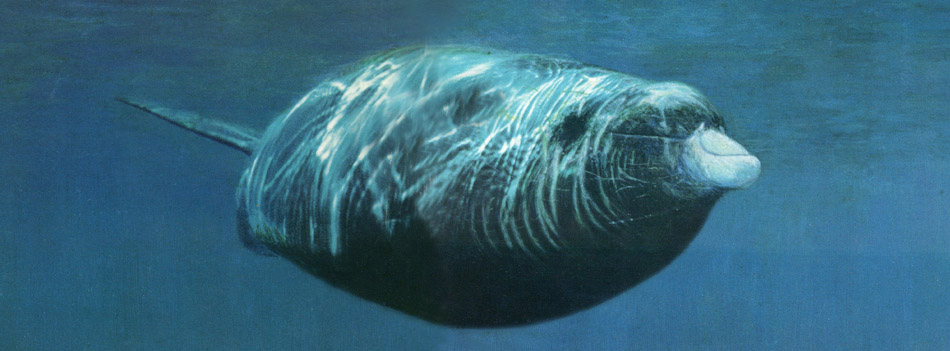BEAKED & BOTTLENOSE WHALES
ZIPHIIDAE
The ancestors of these cetaceans appeared about 30 million years ago and flourished during the Miocene epoch, 25 to 10 million years ago. At that time they developed into dozens of species, some of whose descendents survive today.
The beaked and bottlenose whales are generally shy creatures inhabiting remote offshore waters. Several species have not been described sufficiently to be recognized at sea. Most of the information about these whales has been collected by beachcombing for carcasses washed ashore by circumstance rather than by whaling research or marine surveys. Relatively few specimens have been collected for study and some of the ziphiids are very little known — unknown species may exist yet.
The excitement of exploring the unknown has attracted many serious cetologists to the study of Ziphiidae at one time or another. All cetologists are beachcombers at heart and hope that some day they will chance upon a creature no one has ever seen before or will have the opportunity to describe a specimen of one of the world’s rarest whales. Because the ziphiids are so rare and so rarely seen, a beginner can make his or her name in the field almost overnight, and a specialist has few peers. Yet the mysteries these strange whales present will not be easily solved by a handful of specimens that chance provides in a lifetime. More than any other group of mammals, ziphiids offer an opportunity for biological sleuthing that will be available for several more human generations. (Unfortunately, it is illegal for citizens to beachcomb for whale remains in the United States without a federal permit. The pursuit of knowledge is not thereby served, and an important and exciting avenue of research for fledgling cetologists is closed.)
While it is true that more is unknown than is known about Ziphiidae, some facts will be given in the species summaries on this website. In general, beaked and bottlenose whales are characterized by wishbone-shaped indentations or grooves on their throats and few — usually two —teeth. The dorsal fin is usually falcate and located two-thirds of the body length from the beak, and the flukes usually lack a median notch. All are pelagic and presumably can dive to great depths. Those species whose diets are known prey predominantly on oceanic squid and fish that dwell at moderate to considerable depths. While the smallest ziphiids may reach only about 12 ft (3.7 m) at maturity, the largest may exceed 40 ft (12 m). Most are extensively scarred and scratched, suggesting that they lead aggressive if not pugnacious lives.









